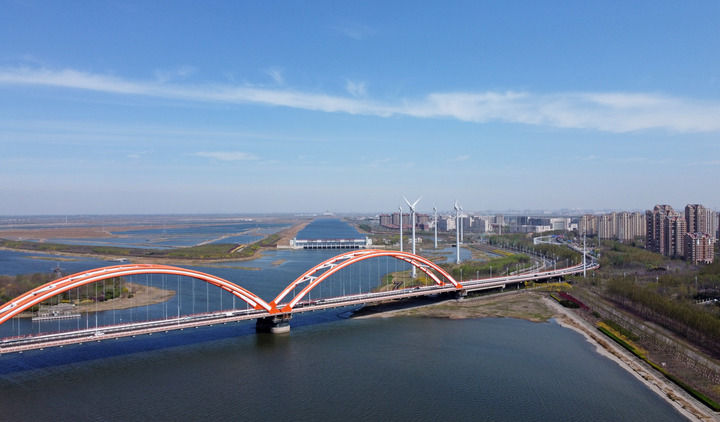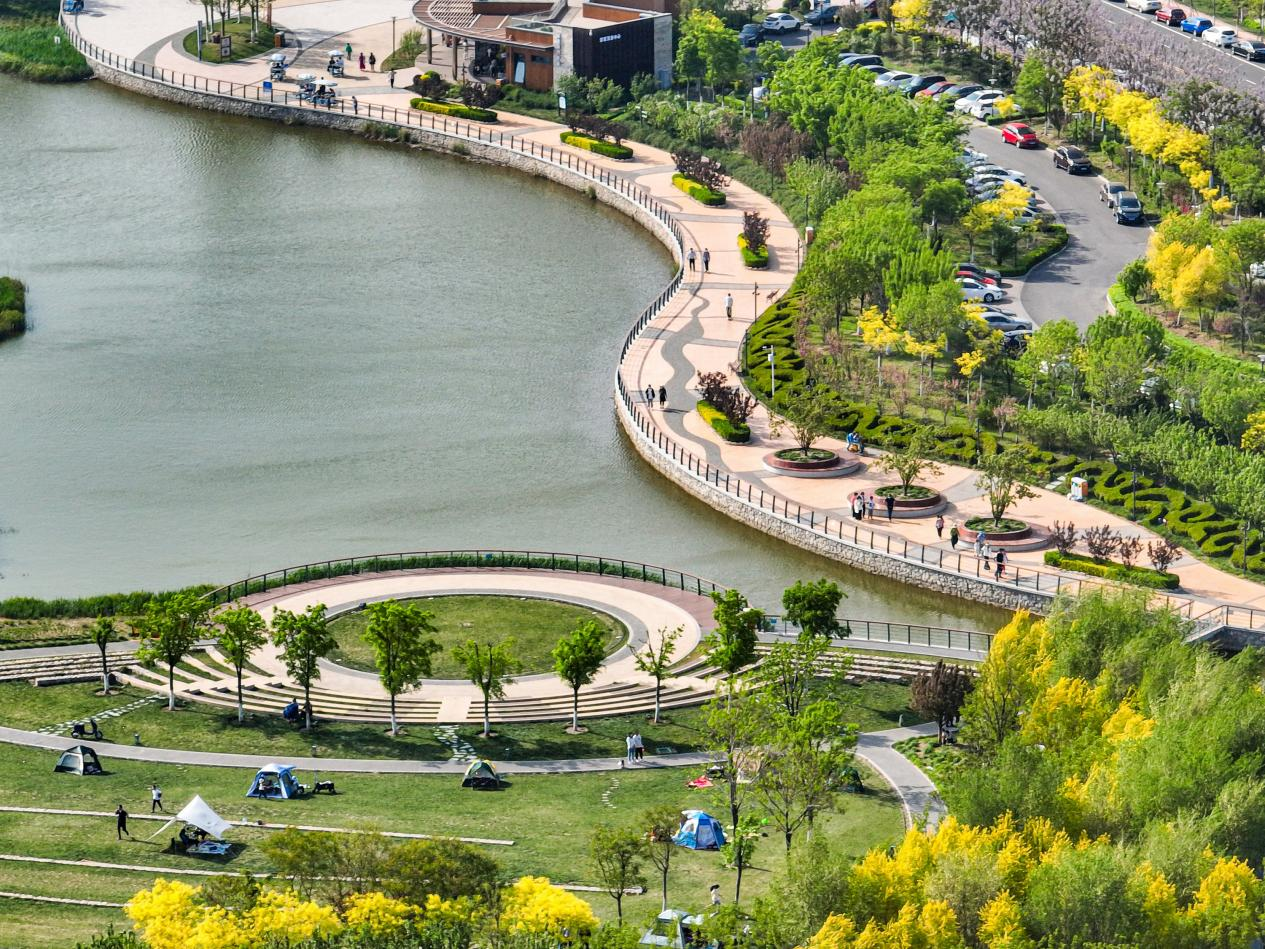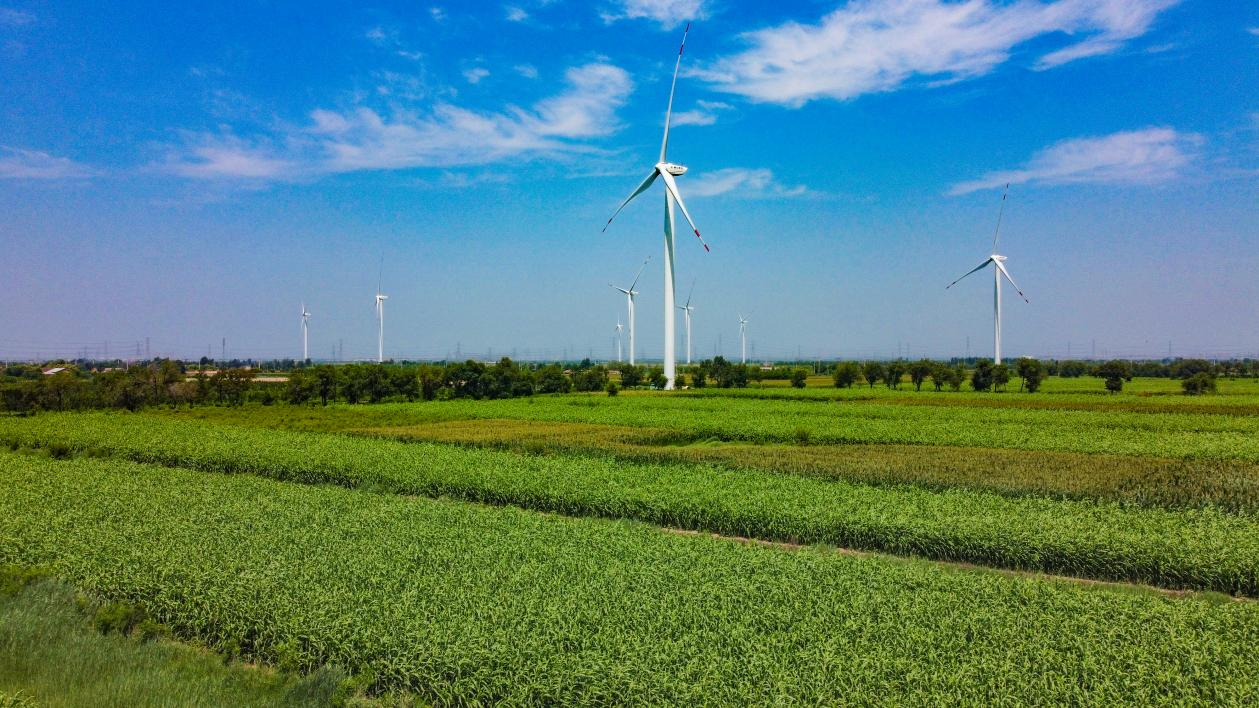
This photo taken on April 14, 2022 shows a wind farm in the Sino-Singapore Tianjin Eco-City at Binhai New Area of north China's Tianjin. (Xinhua/Zhao Zishuo)
BEIJING, Jan. 25 (Xinhuanet) -- Despite howling winds outside, Lyu Zhenying’s house remains warm at about 22 degrees Celsius in Xiaowangzhuang Town, north China’s Tianjin.
Two geothermal heating projects warm 2,470 households in the town and cut over 10,000 tons of CO2 emissions annually.
Xiaowangzhuang Town, a farm town with 28,000 residents, now aims to go carbon neutral, intending to cut 1 million tons of CO2 emissions annually, which makes it an epitome of China's ongoing green transition.
Clean energy increased local farmers' production and incomes.
“One piece of land makes me two-fold money,” local mushroom farmer Chen Jinwei told Xinhua. The solar-powered greenhouses allow Chen to grow mushrooms and generate electricity with the solar panels at the same time.
Local enterprises are also on their transformation towards the town’s net-zero emission. Liu Runzhuang, head of a local bio-organic fertilizer company, said the company now produces more than 80,000 tons of bio-organic fertilizer annually.
In crop production, fertilizer production and application account for 79.7 percent to 89.5 percent of carbon emission intensity. By encouraging organic fertilizer production, the town has achieved a significant reduction of carbon emissions in agricultural production.
So far, the town has more than 4,000 mu (about 270 hectares) of farmland using organic fertilizer, reducing carbon emissions while improving the quality of agricultural products.
Carbon emission reduction practices not only empower rural production and industrial development, but also make city life greener and eco-friendly.
Within a two-hour drive, northeast of Xiaowangzhuang Town lies the China-Singapore Tianjin Eco-City. Green energy equipment is prevalent in public areas: solar-powered buildings, solar-powered benches with charging stations, new energy buses...
The Zero Energy Building is a bright spot among green attempt architectures in the eco-city. All of its energy supplies, including electricity and heating, rely merely on solar power.
"The whole building can keep moderate temperature and humidity despite seasonal changes,” said He Rui, a staff member of the Binhai branch under the State Grid Tianjin Electric Power Company, also one of the building developers.
China has committed to the dual carbon goals of peaking carbon emissions by 2030 and achieving carbon neutrality by 2060. From 2013 to 2023, the energy intensity of China has decreased by 26.4 percent, one of the fastest reductions in the world.

This aerial photo taken on April 24, 2022 shows a view of the Nandi Coastal Trail Park in the Sino-Singapore Tianjin Eco-City at Binhai New Area of north China's Tianjin. (Xinhua/Zhao Zishuo)

This photo taken on July 2023 shows a view of Xiaowangzhuang Town in north China's Tianjin. (Xinhua)



